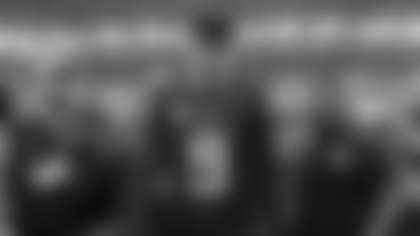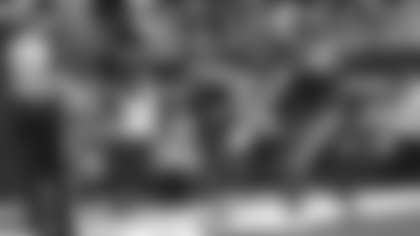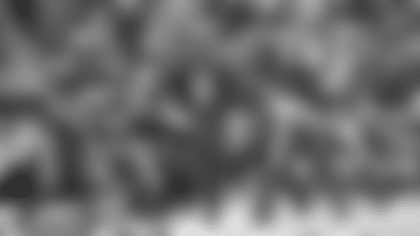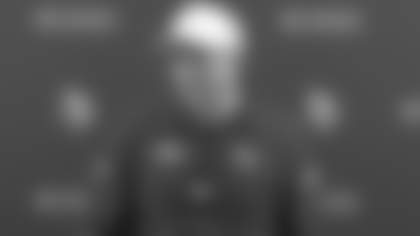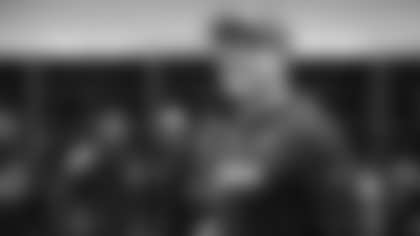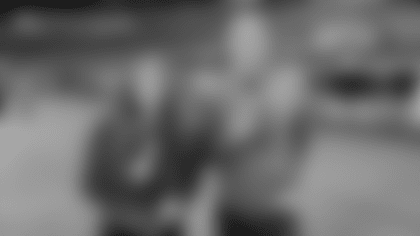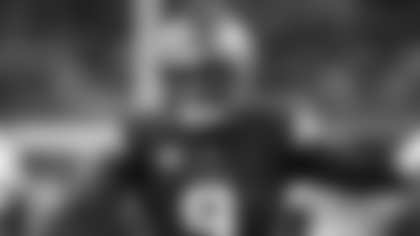The Vikings haven't often drafted offensive linemen early, but NFL Media analyst Daniel Jeremiah is expecting that trend to change in 2019.
Matthew Coller of SKORNorth.com **quoted Jeremiah**, who spoke with media members via conference call last week:
"I wouldn't be surprised if they doubled down," Jeremiah said of the Vikings in response to a question by the Star Tribune's Ben Goessling. "Whether or not it's their first pick, I don't know, but I could definitely see them using two of those picks on offensive linemen."
Jeremiah added: "I think you get into that third round, you can find a guy — you can find a Nate Davis from UNC Charlotte or a Michael Deiter from Wisconsin or a Dru Samia from Oklahoma. Interior players, I think, could come in and play right away and help that football team. I think you'll see all those top centers and guards, those guys are going to go in the second round."
Coller pointed out that tackle "is a different story" as far as depth. He wrote:
Among the Vikings options is picking a tackle in the first round and moving Riley Reiff inside to fill the guard position. Among the potentially available tackles at 18 could be Alabama's Jonah Williams, Washington State's Andre Dillard and Florida's Jawaan Taylor. Of the three, Jeremiah called Williams the "safest pick" and said he could potentially play guard. He tagged Dillard as the "highest upside" player and Taylor as the most physical.
"To me, you've got the elite pass protector [Dillard], you've got the steady Eddie [Williams], and then you've got the mauler [Taylor]. That's how I would describe those three guys," Jeremiah said.
Vikings have positive track record with drafting o-line Round 1
Although the Vikings haven't targeted the offensive line in Round 1 many times, when they have, they've seen a pretty high success rate.
To kick off NFL Draft week, Chris Tomasson of the Pioneer Press **delved into Minnesota’s history with first-round linemen** over the years. He wrote:
In their previous 58 drafts, Minnesota has taken an offensive linemen eight times in the first round. Six went on to make at least one Pro Bowl, including two — tackle Ron Yary and guard Randall McDaniel — ending up in the Pro Football Hall of Fame.
Of the six taken in the top 24 of the draft, all made at least one Pro Bowl. And of those six, three were taken with a pick later than No. 18.
All of this could be encouraging for the Vikings, who hold the No. 18 selection in the draft, which runs Thursday through Saturday in Nashville, Tennessee. Many observers believe they will take an offensive lineman at that spot.
Tomasson connected with former Pro Bowl tackle Todd Steussie, who was drafted 19th overall by the Vikings in 1994.
"There are certainly those guys [at that point in the draft] that in five years from now, when you re-seed the draft of 2019, there will be an offensive lineman that gets drafted in the last half of the first round where they'll be one of the two or three best," Steussie told Tomasson.
The Vikings other offensive linemen to have gone in the first round and eventually make Pro Bowls were Yary (No. 1 pick in 1968) and McDaniel (No. 19 in 1988) and tackles Korey Stringer (No. 24 in 1995), Bryant McKinnie (No. 7 in 2002) and Matt Kalil (No. 4 in 2012).
Tomasson pointed out that since the 2010 NFL Draft, the only offensive linemen Minnesota has drafted before the third round are Kalil and Brian O'Neill, who became a starter last season after the Vikings snagged him in the second round.
The Vikings are set at center with Pat Elflein as the starter and Brett Jones as the backup, but they do have some flexibility on whether they might look to draft a guard or tackle. They could look for a hopeful long-term piece at left guard. Or Reiff could move from left tackle to left guard, opening up a tackle spot. That would be on the right side if O'Neill moves to the left, unless Minnesota secures a left tackle in the draft.
Fortunately for the Vikings, it's a deep draft for offensive linemen. They could even draft one of the two Iowa tight ends (T.J. Hockenson and Noah Fant) or a defensive lineman in the first round and possibly land a quality blocker in the second round.
Cousins' QB draft class ranked 2nd-best since 2000
After weeks and months of mock drafts to predict which players – and positions – will be off the board first, the 2019 NFL Draft is just days away.
It remains to be seen how many quarterbacks will be drafted this year, but NFL.com's Marc Sessler recently took a look at **each of the quarterback draft classes since 2000** and ranked them from best to worst.
Coming in second on Sessler's list was the QB class of 2012, when Washington drafted Kirk Cousins 102nd overall. Cousins, who signed with the Vikings as a free agent in March 2018, was one of 11 quarterbacks drafted that year. The full class is as follows:
Round 1: Andrew Luck (No. 1), Robert Griffin III (No. 2), Ryan Tannehill (No. 8), Brandon Weeden (No. 22)
Round 2: Brock Osweiler (No. 57)
Round 3: Russell Wilson (No. 75), Nick Foles (No. 88)
Round 4: Kirk Cousins (No. 102)
Round 5: None
Round 6: Ryan Lindley (No. 185)
Round 7: B.J. Coleman (No. 243), Chandler Harnish (No. 253)
Undrafted: Case Keenum
Sessler wrote:
Had all gone right, this class had a chance to be remembered as an equal to the all-star cast from 2004 – maybe even 1983. Andrew Luck was a plug-and-play Pro Bowler who surged back to life last season after missing all of 2017 due to shoulder surgery. Luck still has a shot to finish as one of the game's true greats.
[…]
The Redskins missed on RGIII but ultimately found a starter in the same draft by nabbing Kirk Cousins in the fourth round. Who knew he'd become the prize of free agency in 2018 and Minnesota's hope under center?
The only quarterback class of this millennium ranked above 2012 by Sessler was the class of 2004. That year, Eli Manning (No. 1), Philip Rivers (No. 4) and Ben Roethlisberger (No. 11), all of whom remain starters, were taken in the first round.
Which grouping did Sessler put at the bottom? The class of 2007, which did not produce any long-term starters.




